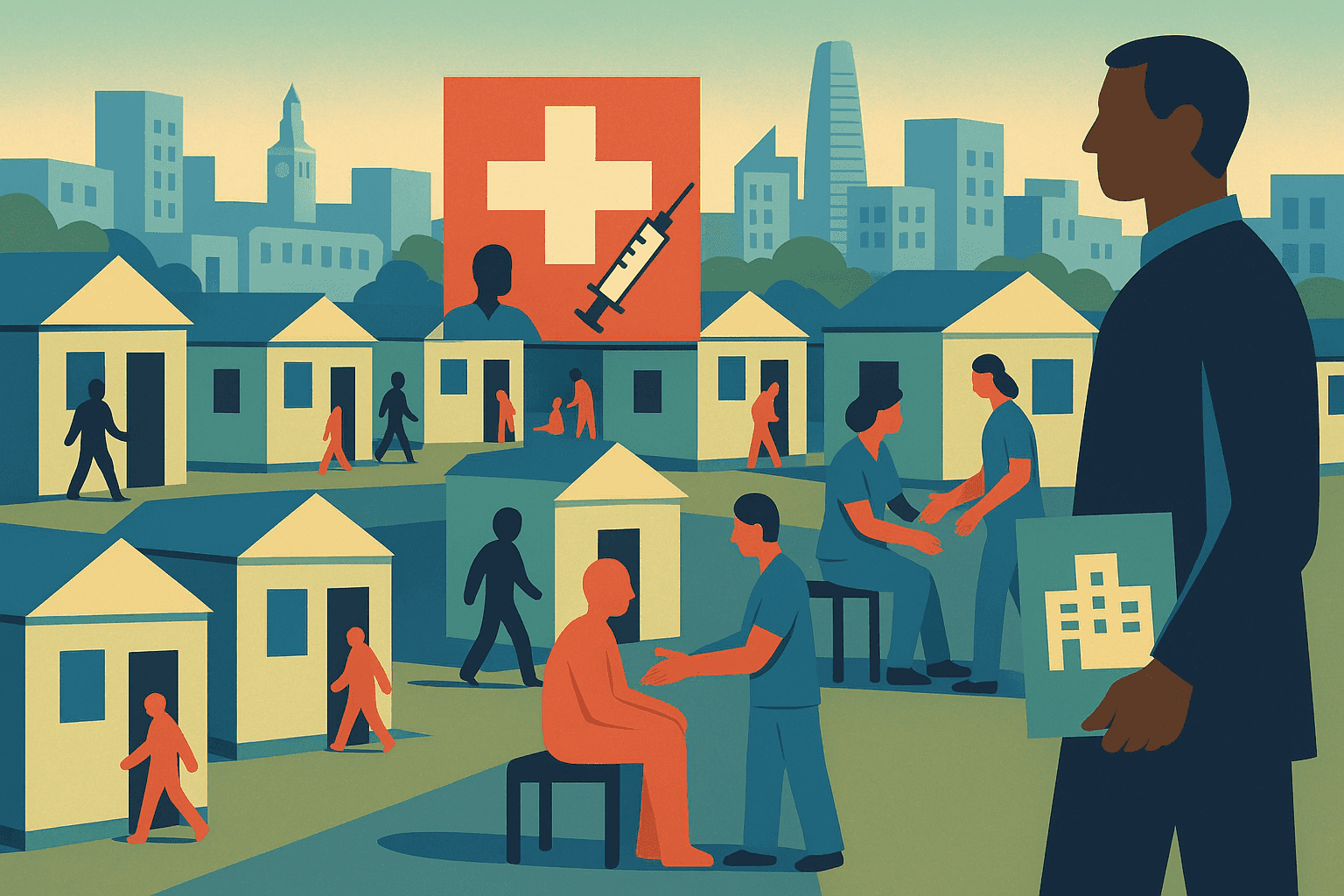Dorsey Proposes "Recovery Cabins" Linking Treatment to Shelter
September 19, 2025
New proposal would relocate a tiny cabin village to SoMa and require residents to start long-acting addiction medication.

The Facts
District 6 Supervisor Matt Dorsey has proposed creating "Recovery Cabins" by relocating a 60-unit tiny cabin village to provide temporary housing for fentanyl users who agree to take a monthly shot of long-acting buprenorphine, according to Maggie Angst at The Chronicle. The experimental program would move the cabin site to 428 11th Street in SoMa and require residents to begin medication-assisted treatment. City health officials report that most treatment dropouts occur in the first month, making stable housing during this critical period essential for recovery success.
The Context
The proposal builds on Dorsey's "Recovery First" approach, which Mayor Lurie approved on May 23, 2025, establishing long-term remission as the city's primary goal for substance abuse programs. The urgency is clear, as San Francisco recorded 460 accidental overdose deaths from January through August 2025.
This model uses extended-release injectable buprenorphine (marketed as Brixadi), which was approved by the FDA in May 2023 and offers weekly or monthly dosing. Tiny cabin villages offer a more dignified alternative to traditional congregate shelters, and this would be the first in San Francisco to have a treatment requirement. The initiative is part of Dorsey's wider strategy, which includes legislation requiring pharmacies to stock buprenorphine and advocating for the fair distribution of behavioral health facilities across all districts.
The GrowSF Take
Instead of just managing street suffering, Supervisor Dorsey's proposal uses evidence-based governance to tackle the fentanyl crisis. The "Recovery Cabins" model directly addresses the critical problem of treatment retention by linking housing stability to medical intervention during the most vulnerable recovery period.
Sign up for the GrowSF Report
Our weekly roundup of news & Insights